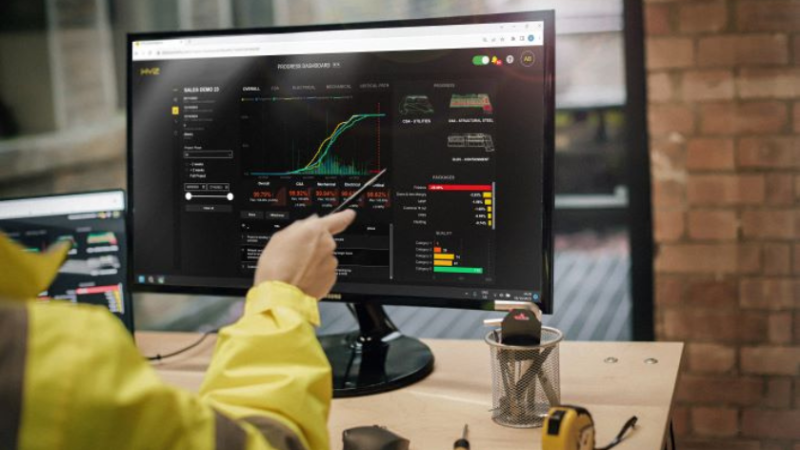For the data centre industry, getting construction projects right first time has never been so important. More space is quickly being required for infrastructure to house storage and processing power to support technologies like AI, at the same time as data centre players must urgently address environmental concerns.
The big problem is that data centre construction is often a long, complex, budget-consuming process. Some estimates also suggest that as much as 30% of on-site work by construction companies is rework, highlights Waleed Zafar, director of mission critical at UK-based provider of construction technology XYZ Reality.
“That’s just a waste of resources, meaning 30% of your team’s time is spent fixing issues that could have been built right the first time,” he says. “In a perfect world, if you were to build it exactly as per the design, it would have a huge effect on both environmental impacts and other key performance indicators.”
Millimetre-level precision
Fortunately for the industry, the surge in the data centre market is happening in parallel with surges in other fields of complementary technology. Among these are software for controlling and tracking the progress of projects and augmented reality (AR), which aids highly accurate 3D visualisation of construction projects to overcome the much less precise conversion of 2D drawings into builds.
“If I can display a construction model via a headset, they can see exactly what they need to build right away through overlaid holograms,” says Zafar. “The construction can then be validated as it’s installed.”

To meet these needs, XYZ Reality has created the Atom headset, which measures at an accuracy of 3 to 5mm. Although such millimetre-scale precision could at first glance seem excessive, Zafar explains how it is crucial to the success of data centre and other related mission-critical construction because a slight error can spiral in subsequent build. “These issues can begin to compound super-aggressively,” he says. “What ends up happening is that when something critical now needs to fit, it no longer fits.”
Wider scope
As well as significantly helping with visualisation, XYZ’s technologies for delivering data centre construction projects can capture a lot more detail and statistics on builds. In that way, they simplify the management of projects, streamlining quality control and providing full visibility, including real-time workflow and resource oversight. They enable users to carry out proactive forecasting and planning to better meet project delivery timelines, reducing risk and ultimately boosting revenues.
Zafar adds that there is much scope for expanding all these capabilities further, depending on what market players want. “We invite businesses to tell us about some of their specific challenges and we can look at ways of solving them through technology,” he says.

He highlights evidence of the growing need for XYZ Reality’s technology by citing the dramatic growth in demand that the company is seeing. Zafar estimates that its technology was deployed in around 300MW of projects two and a half years ago, increasing to 600MW last year and almost 1.3GW today.
Indeed, XYZ Reality has already saved around $100 million on rework costs for partners in the data centre industry since former architect David Mitchell formed the company in 2017 after becoming frustrated about the unnatural process of converting 2D drawings into buildings.
Next-level builds
Now, XYZ has gone even further by striking a partnership that fuses its AR technology with modular, prefabricated components for building data centres supplied by InfraPartners. The two companies describe this combination as leading to a “groundbreaking” approach that will significantly accelerate builds. “With the two solutions combined, it’s much better from a time and efficiency standpoint,” says Zafar.
He highlights that speed is of the essence in the age of ChatGPT and other generative AI, while the partnership aids rapid state-of-the-art data-centre builds in more challenging markets as XYZ Reality ventures further into regions such as Asia-Pacific, Latin America and Africa after an initial focus on Europe and North America. “There’s been this huge drive in demand for data-centre builds, as well as the desire to reduce cost per megawatt,” says Zafar.
On top of that, the move facilitates access to the industry for new, creative talent. “The idea is, how do we translate the experience of a 50-year-old veteran in the space to a graduate who’s just coming into it at the age of 25, getting them up to speed quickly?” explains Zafar.
Meanwhile, XYZ Reality has big potential to expand through other similar partnerships, as well as aid construction in many other sectors, such as pharmaceuticals, hospitals and aviation.
For now, the sheer speed of growth in the data centre market makes it the sector that’s really pushing the boundaries of innovation here, says Zafar. “The data centre market is at the forefront of innovation in construction, and we’re consistently demonstrating our ability to enable faster, more cost-effective builds.”





